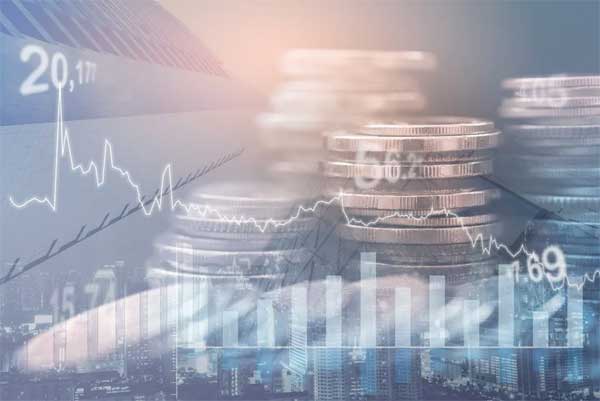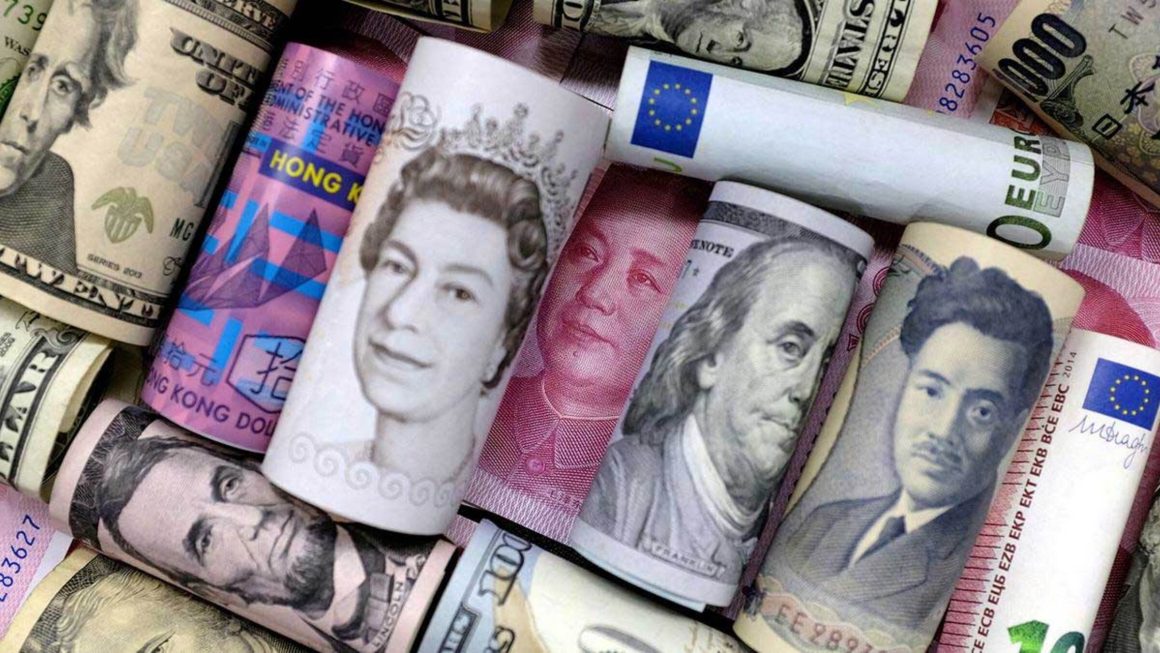In recent years, many countries have observed a significant increase in their foreign exchange reserves. This article delves into the multifaceted reasons behind this trend, offering insights into global economic dynamics, trade balances, capital movements, and the strategies employed by central banks.
Understanding Forex Reserves: A Primer
Foreign exchange reserves, commonly referred to as forex reserves, are crucial assets held by a country’s central bank in foreign currencies. These reserves are essential for a variety of reasons:
- Currency Stability: They help maintain a stable exchange rate by supporting national currency values.
- Trade Facilitation: Forex reserves are used to pay for international trade and manage balance of payment discrepancies.
- Economic Security: They provide a financial cushion against economic emergencies or currency crises.
Countries accumulate these reserves through various means, reflecting their economic health and trade statuses. Typically, reserves are composed of several foreign currencies, with the U.S. dollar, euro, and yen being the most prominent.
To understand the broader economic implications, it’s important to first comprehend how these reserves function. In essence, they serve as a buffer against external shocks and play a role in monetary policy. Forex reserves are also a reflection of economic confidence, influencing international perception and investment.
The level of reserves held by a country can indicate its economic policy effectiveness and monetary stability. In recent trends, an increase in reserves is often seen in emerging economies striving for greater global economic integration and stability.
Global Economic Factors Driving Reserves Up
Several global economic factors contribute to the rising forex reserves, each interplaying in complex ways:
- Recovery from Economic Crises: Post-recession, countries focus on rebuilding reserves to guard against potential downturns.
- Globalization: Enhanced global trade fosters larger reserves as countries seek to support increased cross-border transactions.
- Interest Rates: Low-interest rates in developed markets push investors towards emerging markets, increasing reserves there.
Exchange rates and international trade dynamics also play a significant role. For instance, a weak dollar can lead to increased exports from other countries, boosting their reserves. Additionally, economic policies in major economies like the U.S. or the EU impact global trade and reserve levels significantly.
Another factor is the move towards a multipolar currency system with countries holding diversified currency reserves. This diversification helps in risk management and maintaining a balanced reserve portfolio.
Emerging markets, in particular, have been proactive in enhancing their reserves due to volatility in commodity prices and geopolitical tensions. Moreover, these countries aim to build credibility and investor confidence through robust reserve accumulation.

Trade Surpluses: The Export-Import Balance
A key driver of rising forex reserves is the trade surplus experienced by many nations. When a country’s export value exceeds its import costs, it results in a trade surplus, contributing to reserve growth.
- Export-driven Economies: Countries like China and Germany benefit significantly from high export volumes, enhancing their reserves.
- Commodity Exports: Nations rich in natural resources often see surplus revenue from commodities, further boosting reserves.
- Manufacturing and Technology: Growth in these sectors also supports trade surpluses and reserve accumulation.
Trade policies and bilateral agreements can amplify these effects, encouraging more exports and inflow of foreign capital. For countries with robust manufacturing bases, maintaining competitive advantages through innovation and cost-effectiveness strengthens their trade balance.
Furthermore, trade surpluses enable countries to invest in infrastructure and economic development, creating a virtuous cycle of growth and reserve enhancement. This surplus-driven reserve buildup also provides leverage in international negotiations and economic diplomacy.
Emerging market economies often target trade surpluses to stabilize their currencies and prevent over-dependence on external debt. By leveraging trade advantages, these countries aim to enhance their global economic standing.
Capital Inflows: Investments and Forex Growth
Capital inflows, including foreign direct investment (FDI) and portfolio investments, significantly contribute to rising forex reserves. These inflows result from attractive economic climates and investment opportunities:
- Attractive Investment Destinations: Countries with stable political environments and growth potential attract more FDI.
- Stock Market Performance: Thriving equity markets can lead to increased foreign portfolio investments.
- Real Estate Growth: The real estate sector in emerging markets often draws substantial foreign investment.
Countries actively promote themselves as investment-friendly through regulatory reforms, tax incentives, and infrastructure development. These efforts are crucial in attracting sustained capital inflows, which directly boost forex reserves.
In many cases, capital inflows are also driven by macroeconomic stability and strategic sectors like technology and finance. These inflows not only enhance reserves but also contribute to GDP growth and economic diversification.
The interplay between capital inflows and trade balances creates a dynamic where countries can manage their economic policies more effectively, using reserves as a tool for growth and stability.
Currency Management: Central Banks’ Strategies
Central banks play a pivotal role in managing and growing forex reserves through strategic interventions and policies:
- Monetary Policy Tools: Interest rate adjustments and open market operations influence currency values and reserves.
- Exchange Rate Interventions: To stabilize currencies, central banks may buy or sell foreign currencies, affecting reserves.
- Sovereign Wealth Funds: Investments through these funds can also be a strategic method to grow reserves.
Central banks often aim to maintain a balance between reserve adequacy and economic growth, ensuring that monetary policies align with fiscal objectives. This balance is crucial for economic stability and investor confidence.
Additionally, central banks focus on reserve composition, maintaining a diversified mix of currencies and assets to mitigate risks. They also engage in currency swaps and international agreements to enhance liquidity and strengthen economic relationships.
In recent years, digital currencies and fintech have emerged as new tools in currency management, offering innovative approaches to reserve growth and stability.
The Impact of Rising Forex on National Economies
The increase in forex reserves can have profound effects on national economies, influencing both macroeconomic stability and international standing:
- Enhanced Credit Rating: High reserves can improve a country’s creditworthiness, reducing borrowing costs.
- Increased Economic Leverage: Countries with substantial reserves have more influence in global economic forums.
- Buffer Against Shocks: Reserves provide a safety net during economic crises or unexpected disruptions.
Countries with high reserves are better positioned to implement expansive fiscal policies or undertake large-scale development projects. This economic flexibility can lead to improved infrastructure, enhanced public services, and overall economic growth.
Moreover, an accumulation of reserves can foster greater investor confidence, leading to more significant foreign and domestic investments, further fueling economic development. The ability to stabilize local currencies and avoid inflationary pressures also adds to economic resilience.
However, countries must balance reserve accumulation with other economic priorities, ensuring that funds are optimally utilized for sustainable development and poverty reduction.
Comparison of Forex Reserve Strategies
| Factor | Developed Economies | Emerging Economies |
|---|---|---|
| Monetary Policy | Focus on stability and inflation control | Emphasis on growth and currency stabilization |
| Trade Balance | Often deficit due to high import consumption | Generally surplus due to export-driven economies |
| Capital Inflows | Moderate, focused on high-value investments | Aggressive pursuit of FDI and portfolio investments |
FAQ: Key Questions on Rising Forex Reserves
Q1: Why are forex reserves important for a country?
A: Forex reserves are crucial for maintaining currency stability, facilitating international trade, and providing economic security against external shocks.
Q2: How do trade surpluses impact forex reserves?
A: Trade surpluses increase forex reserves by bringing in more foreign currency through exports than is spent on imports.
Q3: What role do central banks play in forex reserve management?
A: Central banks manage forex reserves through monetary policies, exchange rate interventions, and maintaining a diversified reserve portfolio to ensure economic stability.
Q4: Can high forex reserves affect a country’s credit rating?
A: Yes, high forex reserves can improve a country’s credit rating by showcasing economic strength and the ability to meet international financial obligations.
Q5: Do all countries aim for high forex reserves?
A: While many countries aim to build substantial reserves for economic security, the level of reserves desired varies based on specific economic conditions and policy goals.

